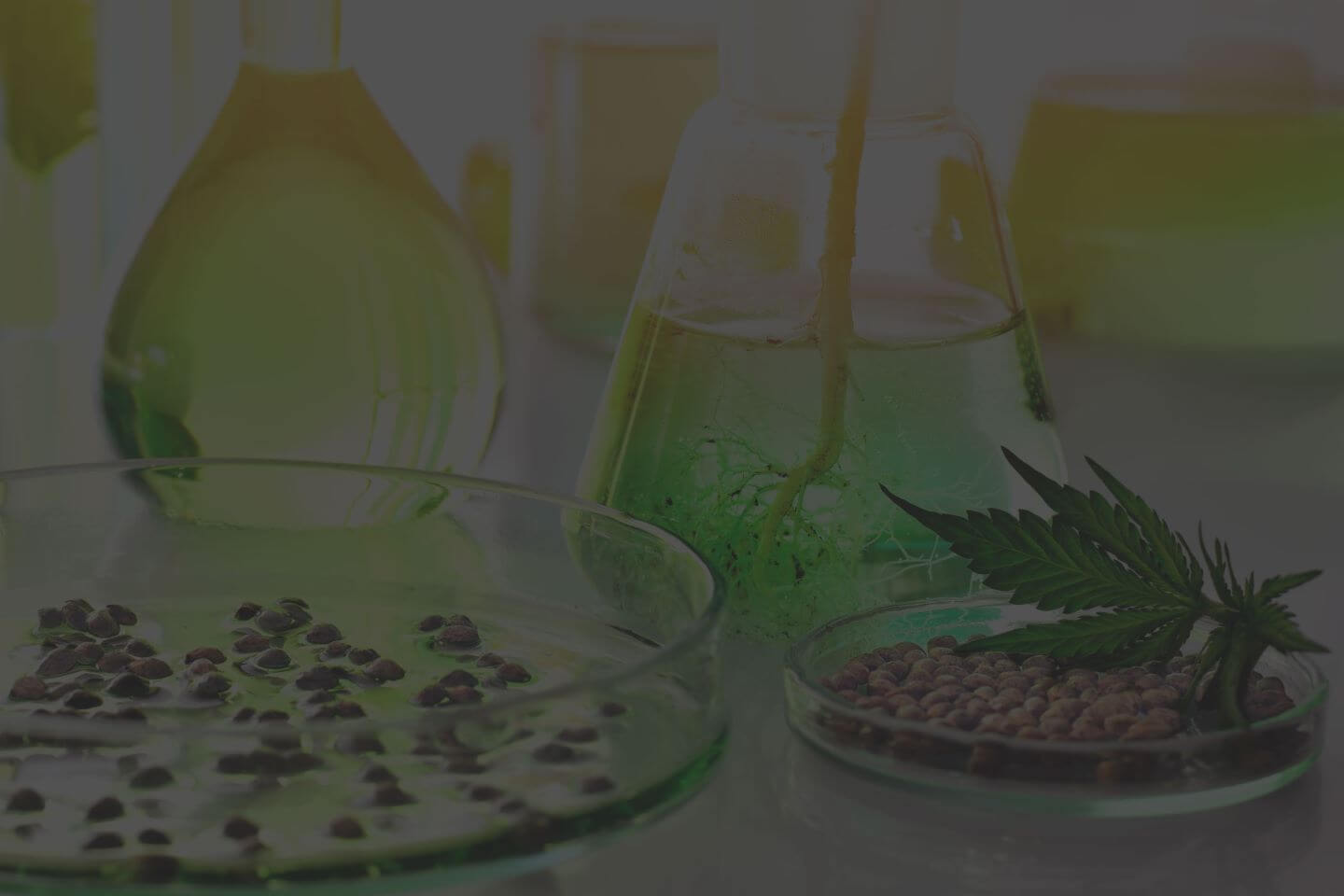As an increasing number of states legalize medical and recreational cannabis, we are entering an exciting new era of cannabis research and development.
Two years ago, one in seven adults admitted to using cannabis in some form. As recently as May 2018, that number has risen, thanks to an estimated 2.13 million medical marijuana patients in the United States alone. The complicated legal status of cannabis at the state and federal level has made quality research scarce, but cannabis science has made massive strides in the past few years. As more states continue to enact laws that dismantle the black market’s grasp on cannabis, we’ve seen an increased number of studies that focus on the benefits that cannabis and cannabinoids have to offer, due to a rise in quality research.
The Endocannabinoid System
The human body has several biological systems such as the nervous system, digestive system, and respiratory system.
The endocannabinoid system, often referred to as ECS, is the biological system in our bodies that helps regulate our “general wellness,” or our physiology, mood, and everyday experiences. The ECS is responsible for accepting and producing cannabinoids, and is composed of cannabinoid receptors, endocannabinoids and metabolic enzymes that help living organisms maintain homeostasis.
The discovery of the Endocannabinoid System
The ECS was discovered in 1992 by the Israeli researcher Dr. Ralph Mechoulam. His research discovered two distinct cannabinoid receptors, CB1 and CB2, with the ability to receive and bind with cannabinoids like THC and CBD. Cannabinoid receptor proteins are expressed throughout the vertebrate central nervous system and peripheral nervous system, which explains why cannabis affects many parts of the body.
CB1 receptors are concentrated primarily in the brain, though they can also be found in reproductive organs. Conversely, CB2 receptors are usually found in the immune system; the highest concentration of CB2 receptors in the body is in the spleen. CB2 receptors are often believed to be more receptive to CBD. When molecules like THC and CBD are introduced into the body, they take over receptors that would otherwise be activated by endocannabinoids.
Diversity in Cannabis
Cultivars:
The cannabis species is more diverse than many, and offers a wide variety of cultivars that are often categorized by plant and leaf shape and size.
Broad Leaf Dominant:
Broad Leaf Dominant (BLD) cultivars, formerly referred to as Indica, represent plants that often have sedative and calming properties and are bushy, short plants with thick, large leaves.
Narrow Leaf Dominant:
Narrow Leaf Dominant (NLD) cultivars, formerly referred to as Sativa, are often tall, lanky plants with thin leaves that offer stimulating experiences and effects.
Hybrid:
Hybrid cultivars represent plants that have a mixed lineage between BLD and NLD plants, and are cultivated for specific effects, aromas, and appearances.
Products:
In addition to cultivar varieties, there is an ever-growing list of forms of cannabis that you can purchase and use, including everything from pre-rolled joints to suppositories. The most common forms of cannabis that you’ll find are:
• Flower:
Cannabis flower is simply the product of the plant that has been harvested, trimmed, cured, and packaged for sale. Generally, no additional processing has been done to the product, and it is intended to be consumed by inhalation, either through vaporization or combustion.
• Extracts:
Cannabis extracts are products containing the derivative compounds of the cannabis plant, also known as cannabinoids. The most widely-known cannabinoid is cannabidiol, or CBD. There are a variety of methods for extracting cannabinoids from flower that utilize everything from hydrocarbons to ice water (see Extraction Methods below).
• Vaporizers:
There are several types of vaporizers, which heat oil to a point of atomization to be inhaled, without combustion. Vape pens are easy-to-use, and utilize the same atomization technology of electronic cigarettes, and usually use oil in a pre-loaded cartridge or “cart”. You don’t have to touch the cannabis product or worry about overbearing fragrances when using a vape pen. Simply screw the cart onto the pen, then inhale on it to jump-start the heating mechanism. Some vape pens require a button to be pushed at the same time you inhale. Vaporizers such as the Volcano and PAX 3, heat an “oven” containing flower or concentrates, which extracts vapor from the flower.
• Edibles:
As the name implies, edible cannabis products have been made to be enjoyed by eating them, rather than smoking or vaping. Edibles are usually made with cannabis extracts that are produced into candies, chocolates, cookies, brownies and drinks that can be enjoyed in many settings. It should be noted that consuming edibles has a much longer onset than vaping or smoking, and consumers should be cautious with their intake dosage.
• Tinctures:
Tinctures are a form of extract that is designed to be ingested sublingually or orally. Absorption rates are believed to be greater when cannabinoids are administered this way, and avoids having to eat a candy bar or inhale smoke to feel the effects.
• Topicals:
Topical application of cannabis is on the rise as cannabis massage therapy and infused skin care products become available in the mainstream market. While topicals won’t stimulate your CB1 receptors in the same way that smoking or eating activated THC might, your skin and CB2 receptors absorb and utilize cannabinoids for a variety of benefits, including pain reduction that works synergistically if you are also ingesting cannabis. Topicals allow patients to experience the therapeutic effects of cannabis without undesirable psychotropic effects.
The Genetics of Cannabis
Due to the diversity among cannabis plants, efforts are underway to map the cannabis genome. Cannabis genome researchers aim to identify the sources behind the effects of cannabis, as well as distinguish among various cultivars.
In December 2018, a team of Canadian researchers discovered how the cannabis species evolved into distinctive low-THC (hemp) and high THC (cannabis) varieties. The potency distinction came as a result of virus-like segments of DNA. These segments are known as retroelements, and can copy and rearrange themselves all over the genome, and this process can occasionally result in confusion and unintended changes.
Now that researchers are developing a cannabis genome map, it will be easier for scientists to study specific cannabinoids as aspects of the plant as they relate to applications in health treatments, as well as effects on the body. A genome map also allows for specific identifiers to be utilized in refining cannabis crops and selecting specific cultivars with known growth, yield, and effects. Genome maps, unlike genome sequences, allow researchers to trace the genetic lineage of a plant species through several generations, looking for identifying marks tied to specific characteristics like abnormalities and diseases.
These genetic advances will help ensure consistency of effect and reliability of the cultivars that suit your specific needs.
Trichomes
Cannabis plants have three specific types of trichomes–the resinous glands on the outside of the bud that make it sticky–that all produce the same cannabinoids, terpenes, and other cannabis compounds. Trichomes are responsible for producing cannabinoids and terpenes in the cannabis plant.
They also serve as a protection device against ultraviolet rays, fungus, and pests that would otherwise destroy crops. When harvesting, you want to ensure that your trichomes don’t fall off, as you’ll lose many of these concentrated cannabinoids, and you won’t get the full effects of the plant.
When trichomes are clear or amber, they are at the beginning of the plant’s growth cycle. When they are at their maximum concentrations, the gland heads will have an opaque appearance.
Bulbous trichomes are the smallest (barely visible to the naked eye) and are only made up of a few cells that form the shape or a stalk and bulbous or swollen glandular head. Capitate-sessile trichomes are 3-4 times the size of bulbous trichomes (made up of 8-16 cells) and have a single-cell stalk with a large, round gland on top.
Capitate-stalked trichomes are the most common trichomes of all. These are the largest trichomes, and can be seen with a hand-held magnifying glass. They appear during the flower phase, and produce the highest concentrations of cannabinoids.
Terpenes
Terpenes give different cannabis cultivars their unique aromas and effects. Terpenes are aromatic metabolites found in the oils of all plants. At least 20,000 terpenes exist naturally, more than 100 of which can be found in the cannabis plant. Trichomes on the cannabis plant not only include cannabinoids, but also produce terpenes that impact the cannabis experience.
Though terpenes have dozens of unique aromas, they can be classified into four groups: sweet, sour, spicy and bitter. Cannabis cultivars may smell like tea leaves, cheese, citrus, or a variety of other fragrances, but there are five main terpenes you should be familiar with:
1. Myrcene:
Many of us have consumed myrcene in a variety of foods like mangos, lemongrass, and even hops, a distinct ingredient in beer. This terpene gives off an earthy, herbal aroma that offers a relaxing effect, and also has anti-inflammatory and anti-carcinogenic properties.
2. Linalool:
Most commonly found in lavender, linalool has a floral, citrusy, confectionary scent that is often used for anxiety relief and sedation. Linalool also possesses anti-depressant properties.
3. Limonene:
Commonly found in lemons, oranges, and juniper, Limonene is your upbeat, energetic, elevating terpene. Smelling of citrus, limonene is a stress reliever and mood elevator, and offers anti-cancer, anti-inflammatory, and antiseptic benefits.
4. Pinene:
As the name suggests, pinene is found in pine trees, along with rosemary and sage bushes. A piney aroma enhances alertness and increases energy, as well as offering anti-inflammatory and antiseptic benefits.
5. Caryophyllene:
Found in cotton, black pepper, and cloves, this terpene is known for its spicy, peppery aroma. Caryophyllene can be used as a pain relieving terpene and also poses anti-inflammatory, anti-cancer, and antiseptic properties.
As noted, each terpene offers a variety of benefits that, when combined with the benefits of THC and CBD, can enhance the overall effects of cannabis use. The theory that cannabinoids, terpenes and other aspects of the cannabis plant work better together is known as the Entourage Effect
Research has shown that terpenes interact with and offset certain aspects of cannabinoid consumption, allowing for more therapeutic applications without the intoxicating effects. This is also why many prefer full spectrum offerings over distilled and isolated cannabinoids that don’t offer the same benefits that whole plant products provide.
Cultivation
Cannabis is cultivated in a variety of ways, including indoors, outdoors, in greenhouses, and in hydroponic grows (soil-less methods). Many cultivators use a variety of methods, depending on the results they are looking for.
• Outdoor Cultivation:
For many, growing cannabis can seem like an expensive endeavor. Growing plants outdoors is a low-cost alternative to having to buy lights, fans, and soils that mimic natural growth methods. Outdoor grows aren’t limited by the height of your ceiling or width of your closet, and can yield plenty of product when it comes time to harvest without much of an investment.
That being said, you’ll need to grow in a climate that allows for a full growth cycle where the temperatures won’t drop below 55°F. Also consider whether your climate is prone to flooding, fires, excessive moisture, or pests. Mildew, mold, and pests can decimate a crop of cannabis, and may be harmful if consumed. The relative humidity should be between 40% and 60% for optimum yields.
• Indoor Cultivation:
Indoor cultivations offer the greatest control over your crop. You can keep the grow protected and perfectly-climate controlled. Additionally, you can grow year-round almost anywhere you want without fear of weather or outsiders. On the other hand, because you control every variable, oversight of just one variable can affect the entire grow. Indoor cultivation is great for advanced growers looking to fine-tune their grow methods for the best yields, crops, and genetics.
• Greenhouse Cultivation:
Greenhouses are structure often made of glass or transparent material that offers warmth and protection to plants. Greenhouses can extend your growing season, expand your variety, and minimize the impact that weather patterns, severe storms, and low temperatures can have on crops.
The enclosed nature of the grow allows for greater control of the environment, from temperatures to pesky rodents. For this reason, many cultivators use a hybrid greenhouse-outdoor method to extend their seasons. With these benefits does come a high cost of building and maintaining greenhouses; the more advanced climate control you need, the higher the operating cost to maintain those conditions. Also, by containing your environment, introduction of even a handful of pests means they can quickly spread throughout your ecosystem.
• Hydroponic Cultivation:
Hydroponic grows date back thousands of years to Asian gardens, and scientists began experimenting with hydroponic methods in the 1950s. Plants grown using hydroponics can grow up to 50% faster than soil grown plants, and produce bigger yields. Without soil, the roots of the plant can absorb nutrients much faster, allowing it to expend excess energy on growth efforts.
Hydroponic systems typically use less water than soil systems as well. While these systems require less labor and allow you to grow year-round, they come with a cost; hydroponic grows are relatively expensive to set up and maintain, and require much more supervision, as mistakes can rapidly affect more plants than soil cultivations.
Within each of these cultivation categories, there are a variety of nuanced systems, methods, and techniques that are employed by certain cultivators to enhance yields, grow more potent crops, and offer ethically-cultivated products. These methods include living soil, permaculture, and no till process where the focus is placed on both the cannabis plant and the environment that provides nutrients to the plant.
Extraction Method
As discussed above, cannabinoids can be extracted from plant material using a variety of methods. Depending on the viscosity and application that is desired, cannabinoids can take the form of viscous liquids like honey, crystalline structures, and whipped badgers.
• Hydrocarbon:
Hydrocarbon extracts utilize solvents such as butane, propane, and hexane to pull cannabinoids like THC and CBD from the plant material. These are the most common extracts, and are often referred to as shatter, live resin, or budder. The solvent is propelled through plant material, rapidly extracting compounds such as THC and terpenes.
• CO2:
CO2 extraction is often used for creating oils and edibles, due to the viscosity of the product, and the lack of chemical solvents that may end up in the final product. It is also one of the few extraction processes that the FDA has labeled safe for industrial extraction and the process involves less risk of compromising plant material and compounds, advantageous for pulling cannabinoids like THCA, CBD, CBG, and THCV.
• Solventless:
Solventless products use only temperature and pressure to extract cannabinoids from the plant. Water, ice, heat, and intense pressure are used to mechanically separate cannabinoids from the rest of the plant. These extracts are often referred to by names such as dry sift, ice oil, water hash, rosin, or full melt.
The amount of diversity among cannabis cultivation, extractions, and consumable products can seem overwhelming. Thanks to the advances that are being made in the scientific community, we are able to better understand cannabis, its various compounds, and the best ways to ensure that consumers are getting premium, lab-tested products in legal medicinal and adult use cannabis markets.
To learn more about cannabis science, premium, products, or Happy Valley’s scientific contributions to the cannabis industry, join our email newsletter by completing the form below or contact us with questions.




